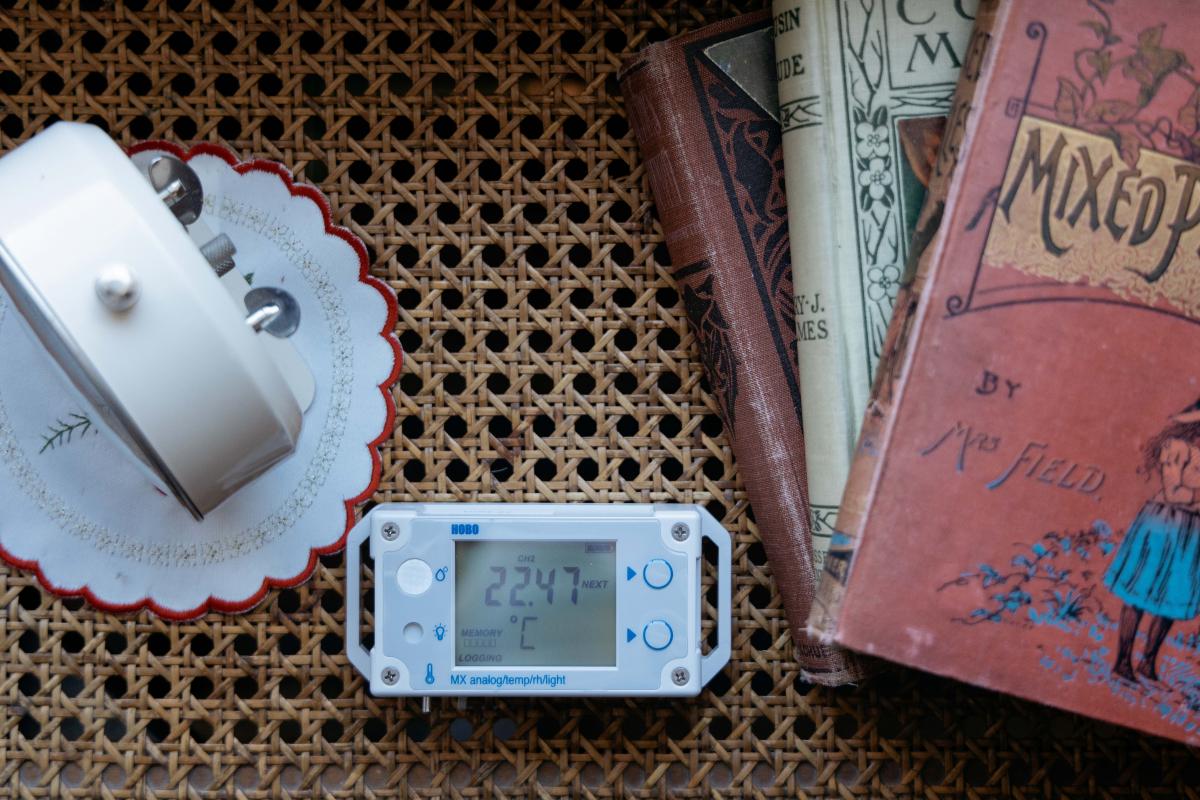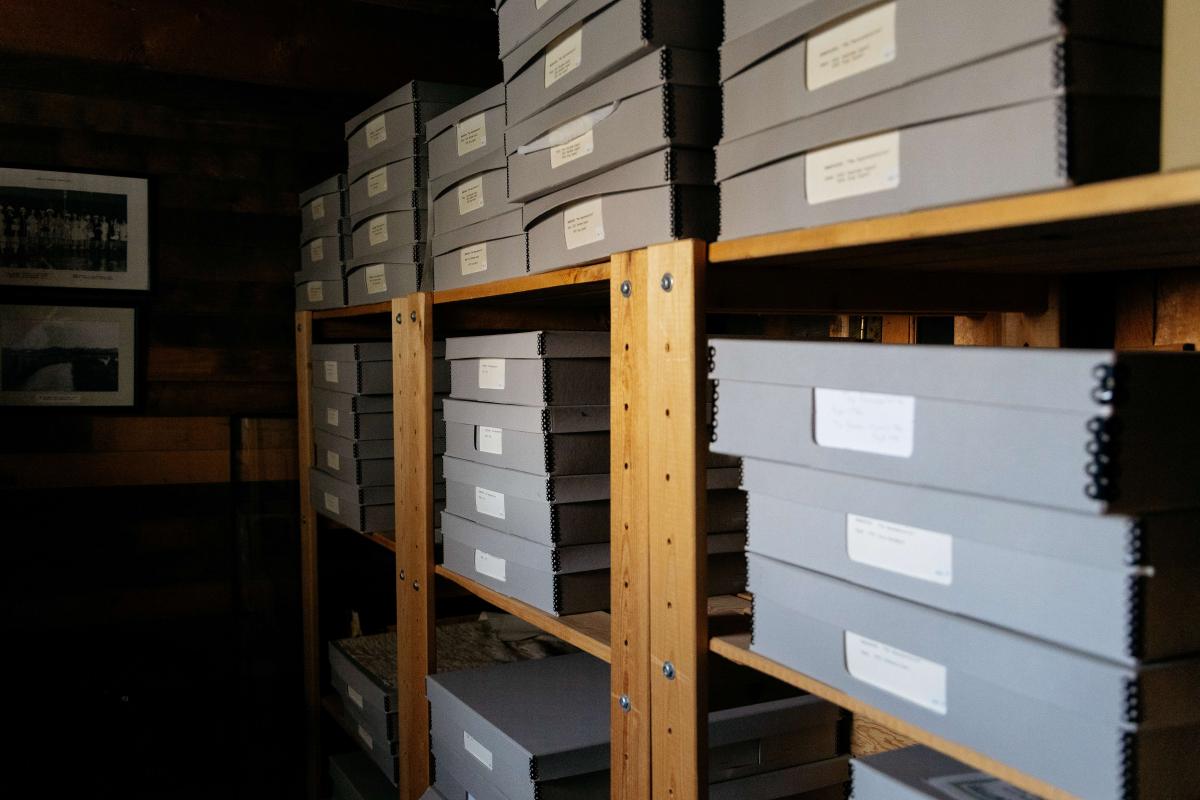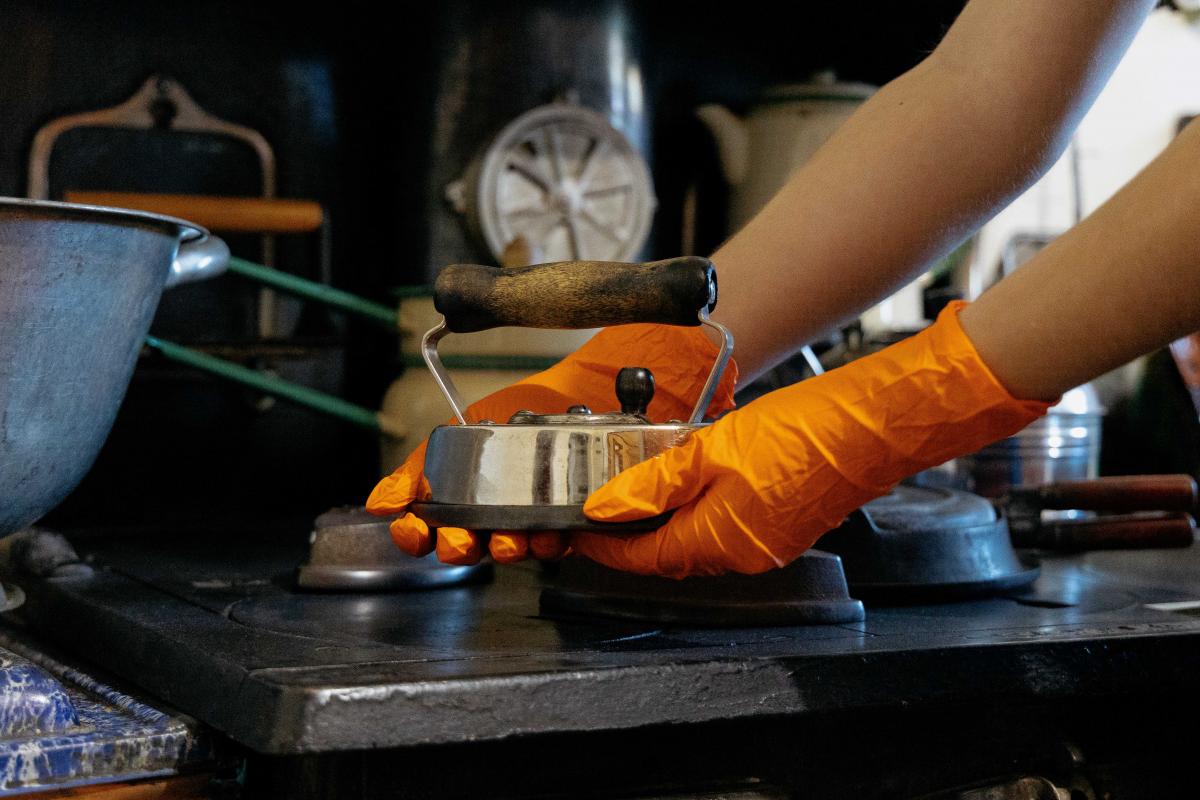Caring for the collection
Tucked away in the quiet rooms of the Dr. Woods House Museum, the magic of preservation is happening. Skilled hands and trained eyes are working tirelessly to ensure that the museum’s artifacts – some of which are more than a century old – will survive for generations to come.
Conservation is a science requiring expertise, care and meticulous techniques, as well as a wealth of historical knowledge. Every object is vulnerable to decay over time from external influences like UV exposure, gravity, humidity, pests, oils and more. Understanding how to protect artifacts from these things and putting preservation into practice is essential in ensuring items remain intact and retain their integrity.
Environmental controls
An artifact in and of itself, the Dr. Woods House was not built to be a museum and lacks the specialized environmental controls needed for optimal artifact preservation. This leaves both the house and the collection vulnerable to sunlight, humidity and heat.
What’s more is that each type of artifact thrives best in a specific environment. Clothing (like Dr. Woods’ wool coats!) and other textiles require cool, dark and dry conditions. Wooden furniture benefits from stable humidity. Newspapers and photographs should be shielded from sunlight, as their inks and pigments are vulnerable to degradation.
To address these challenges, City staff are monitoring conditions using specialized software that tracks temperature, humidity and light levels. This data will inform decisions about environmental solutions such as UV filters, humidifiers or de-humidifiers, and temperature controls. The data can also help create localized microenvironments for sensitive artifacts by stabilizing conditions. Finding a balance that will protect the variety of artifacts in the Dr. Woods House Museum collection is an ongoing process.

Storage
Another impact to the longevity of an artifact is storage. When not on display, clothes should be stored on padded hangers or horizontally (so they don’t fall victim to gravity), or in archival boxes or drawers lined with acid-free tissue paper. Shoes are mounted on custom supports to preserve the shape and integrity of the artifact by cradling key areas like the sole and heel. Ceramics or glassware should be stored in padded drawers or on shelves with dividers to prevent bumps and breaks. Paper and photographs should be stored flat and away from sunlight.
“We’re taking the time to ensure every artifact is stored in the best possible conditions within the context of the house,” says Taylor Berry-Boparai, City of Leduc Heritage Coordinator. “It’s our job to create conditions that allow these objects to last for future generations.”

Handling
Ever wonder why museums are full of signs that say: “Please Do Not Touch Artifact”? This isn’t just to avoid accidental tears or cracks or breaks in fragile items. The oils in our skin that transfer to objects we touch can be extremely damaging in the long run. When handling an artifact – whether to examine, restore, photograph or put on display – staff always wear gloves and use great care. The process is slow and methodical, but every piece is handled as if it’s irreplaceable—because it is!
Preservation is more than a task—it's a commitment to the future. The Dr. Woods House Museum is brimming with items that each carry their own quirks and histories and have unique conservation needs.

Museum Manners: Museum staff around the world put many hours of care and expertise into preserving artifacts. At any museum you visit, do your part to help care for the legacies and stories of the items by respecting the the instruction of museum signage and staff.
*The museum currently remains closed for public access to allow staff to focus on the collection.